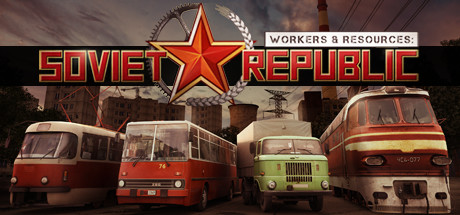Throw away capitalism and build a thriving republic on equality and the foundations of a planned economy in this city building economic simulator. Are you up to the task, comrade?
Type: Single-player
Genre: Strategy, Simulation
Developer: 3Division
Publisher: 3Division
Release date: 15 March, 2019


Overview
Economic simulations, whether they’re full-blown city builders, like Cities: Skylines and Tropico, or more of a distilled economic experience, like Anno and Port Royale, have always been a genre that piques my interest with each new release. Although the mainstream titles honed the template for these into one that is reliably enjoyable in many similar forms, the experimental varieties that explore new concepts are always welcome, though they often carry with them some new flaws of their own.
Enter Workers & Resources: Soviet Republic. It’s a city builder with a twist that you’re hit with right off of the bat: you’re a socialist republic. From a gameplay standpoint, this means that currency is for your dealings with other nations and that your people are granted what they need and perform their labors without being paid directly. What may surprise some players is the depth to which your planned economy operates though. For better or worse, there’s serious micromanagement to be found here and you’ll be tweaking the flow of your republic from start to finish.
From Each According to His Ability…
As with any good economic simulation, Workers & Resources is composed of a number of interlocking systems that require plenty of oversight to perfect. Forget about zoning though, as its nonexistent here. Every single building is hand-picked and placed by you and there’s quite a selection to choose from. Your industries need to be steadily supplied with workers, power, and raw resources, a task that is easier said than done. In other city builders, you may only need one worker per employment slot that will keep working it until circumstances change in one way or another. In Workers & Resources, every employment slot is fluid and up for grabs, none are reserved, there are no steady jobs, and every member of society goes to the most convenient open employment spot when they walk out their front door for their day’s labors. This ends up making the experience feel more like a puzzle than a simulation at times as your workers will crowd into the closest place of employment near their home, even if there’s one slightly further away that is more in need of their labor. Restricting open employment slots in your workplaces is the name of the game for guaranteeing some level of universal productivity until the population is capable of filling all of the spots available for all shifts, which can be a challenge to balance when you’re also in charge of how many citizens are shipped in to live in your residential facilities and unable to see much other than the maximum number of workers at one time and who’s currently working there.
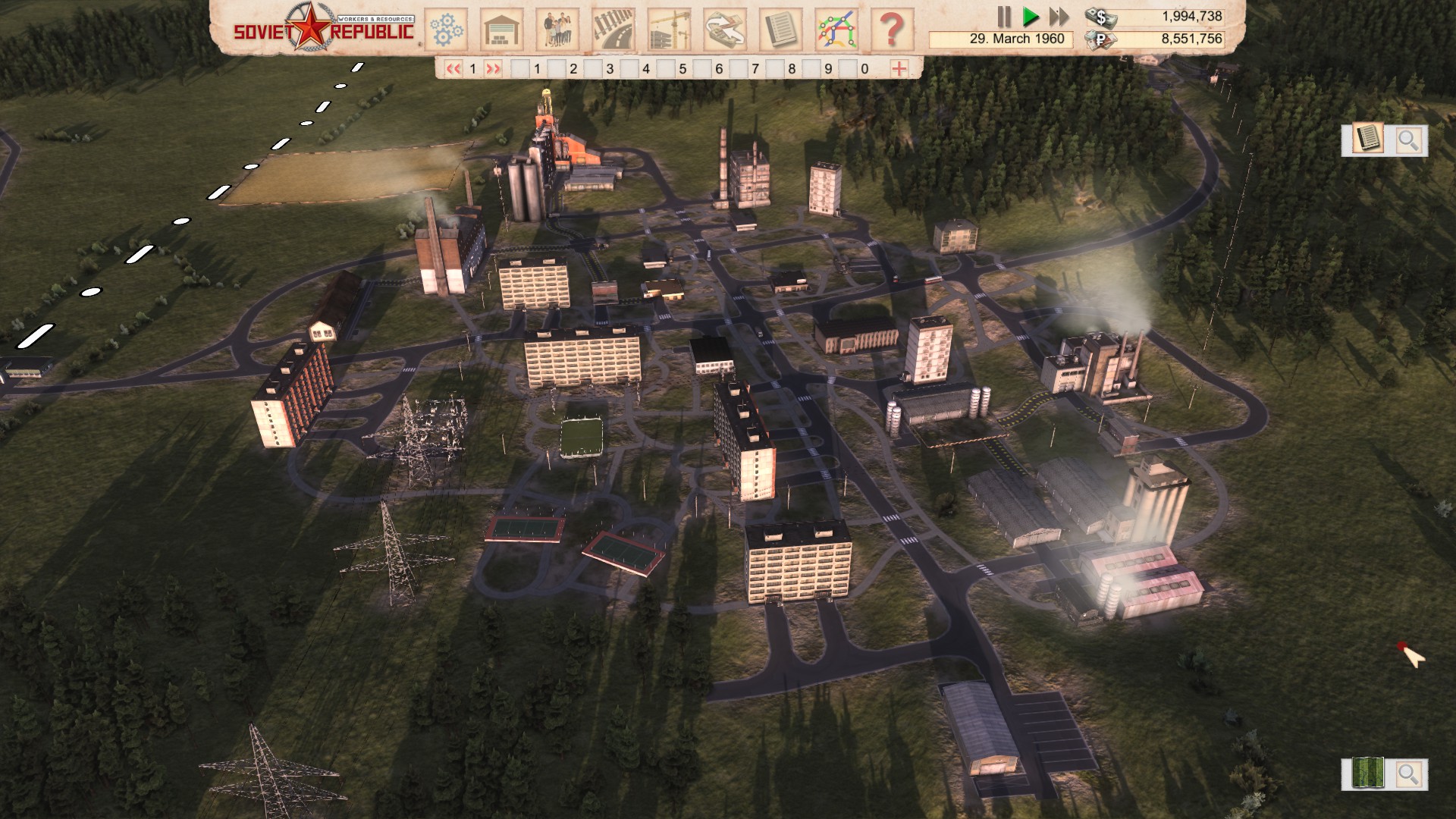
Logistics take more of a front-row seat than you may be used to in your city builders as well. Just like buildings, every vehicle is individually produced and it’ll be your job to set their routes and determine what they load and unload. Buses and trucks transport your workers and resources and smart management is needed to optimize your production lines to earn you the greatest profit from your neighbors if you so choose. Self-sufficiency is a nice ideal to shoot for, though you’ll likely be exporting excess goods for some time to acquire the rubles and dollars to build the early facilities and infrastructure to start you down that path.
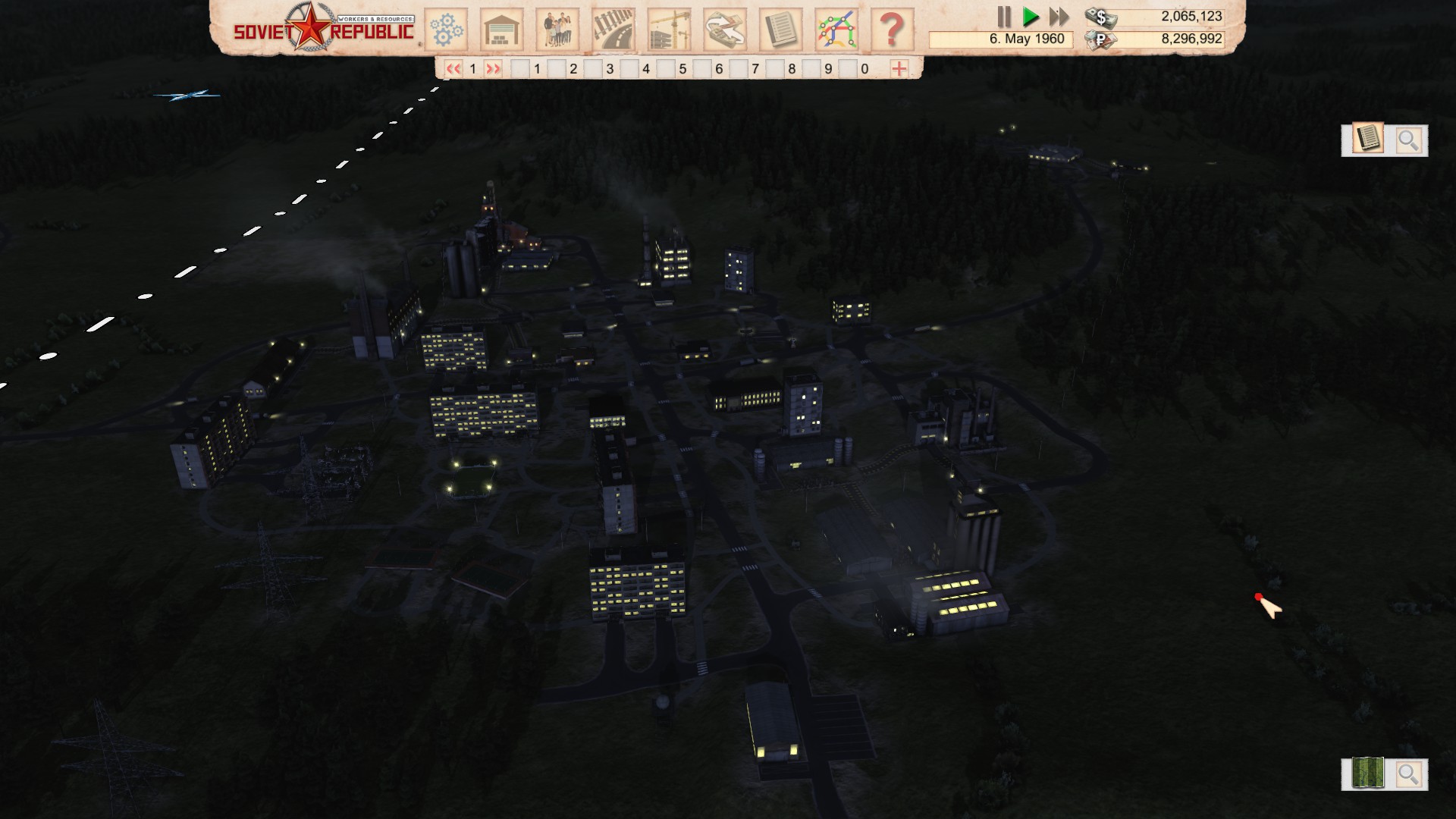
Road and railways offer obvious benefits to those who’ve built a city or two in the past, but a few methods of transportation stood out as particularly useful and well done. Footpaths are absolutely incredible and enhance mobility and travel range for your citizens. They’re every bit as important as roads and allow your citizens to access a greater range of services and workplaces that would be out of their reach if they were walking along your roads. On the other hand, conveyors and factory connections bring in some Factorio-lite logistical methods that allow you to cut out trucks that are acting as middlemen in related industries. Instead of having a truck deliver livestock from your ranch to the slaughterhouse via your road network, you can just build them near each other and connect them with these tools and you’re good to go, no further planning needed on your end. The less trucks on the road the better after all, especially since they require duel to remain in operation.
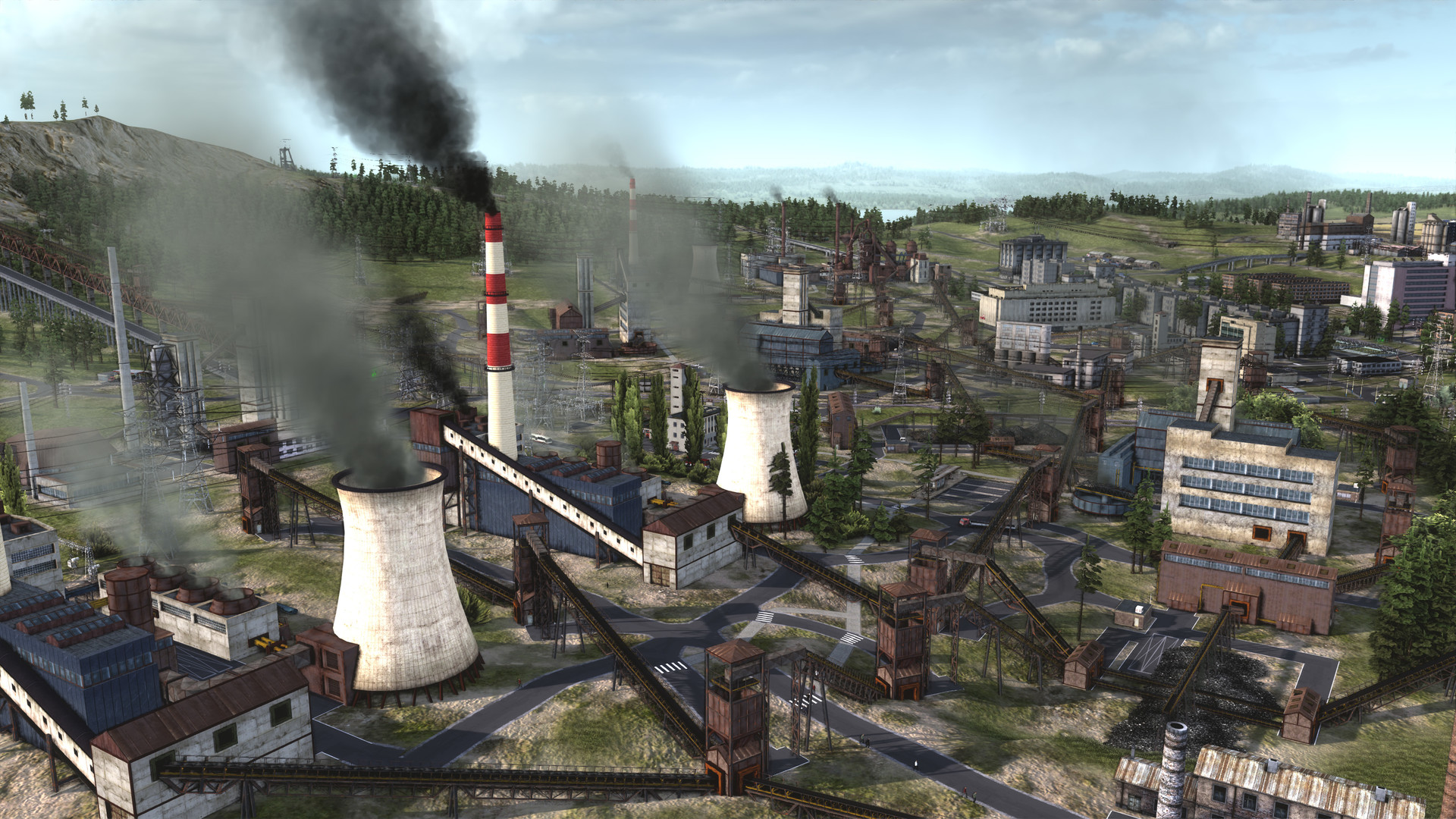
…To Each According to His Needs
Every citizen has needs that must be filled in order for them to be productive and content members of society. Food, childcare, consumer goods, and booze are a selection of some that you’ll need to be providing, and they’ll need to be within an acceptable traveling distance of the homes of the citizens that are seeking them out. Bus routes, trolleys, and footpaths are some of the effective methods for giving them greater access, but if you play your cards right, you might begin supplying them with personal vehicles that allow them to travel from one parking lot to another. An odd quirk here is that citizens only ever travel in one direction, their destination for the day, and never travel back to their homes. This takes away from the realism value of the simulation somewhat and allows you to game the system by creating an outgoing transportation network without worrying about the return trip as they simply teleport home after finishing with their business. I’m hopeful that this will be changed and represent a more realistic system in the future.
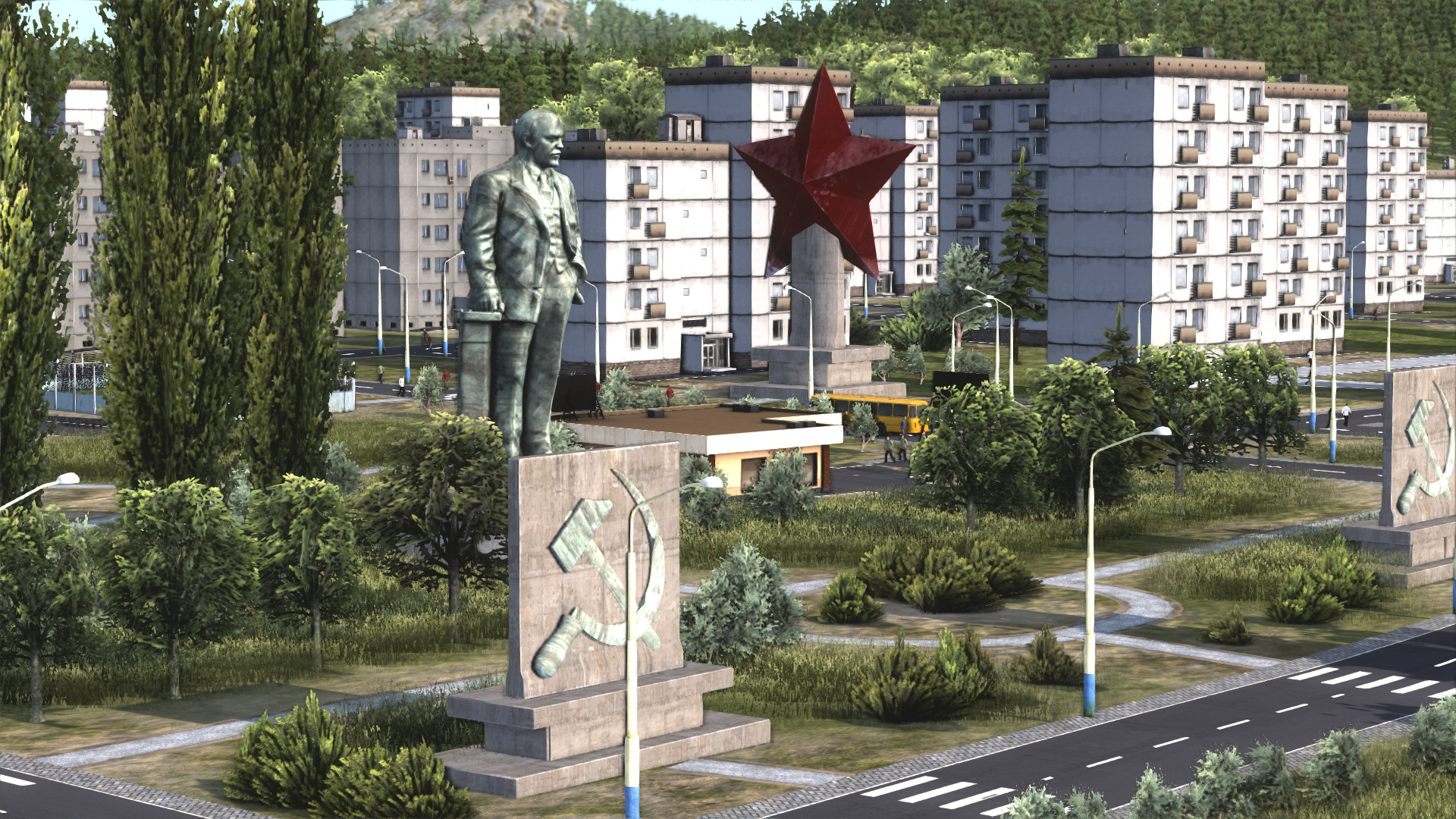
Final Thoughts
Workers & Resources: Soviet Republic immediately pulled me in when I started it up. It was clear that it had plenty of depth and a good economic sim is something that I’ll always make time for. That said, after a few hours, it started to lose some of that luster after encountering its flaws. Some aspects are much less intuitive than they are in similar titles while offering few if any additional benefits or customization options within their systems. This is further complicated by a tutorial that is functional, though far from complete in giving a new arrival a solid understanding of the simulation. One-way population travel is also immersion-breaking and results in only having to deal with the first half of worker transportation. In a simulation that seems to be reaching for a realistic feel to it, this is a glaring flaw in my eyes. Alternatively, the overall atmosphere is great as the soundtrack fits nicely and the visual presentation is good enough for the genre, even if it’s unlikely to truly impress anyone. Fortunately, we’re still in Early Access with this one and my interactions with other players and those affiliated with the title have been nothing but pleasant when I sought out answers to questions that I had. In its current state, I can’t recommend Workers & Resources: Soviet Republic over its competitors in the genre, but I can say that this one’s likely to have a bright future if its stay in Early Access is used to its fullest to hammer out its flaws and continue to build on its systems.

